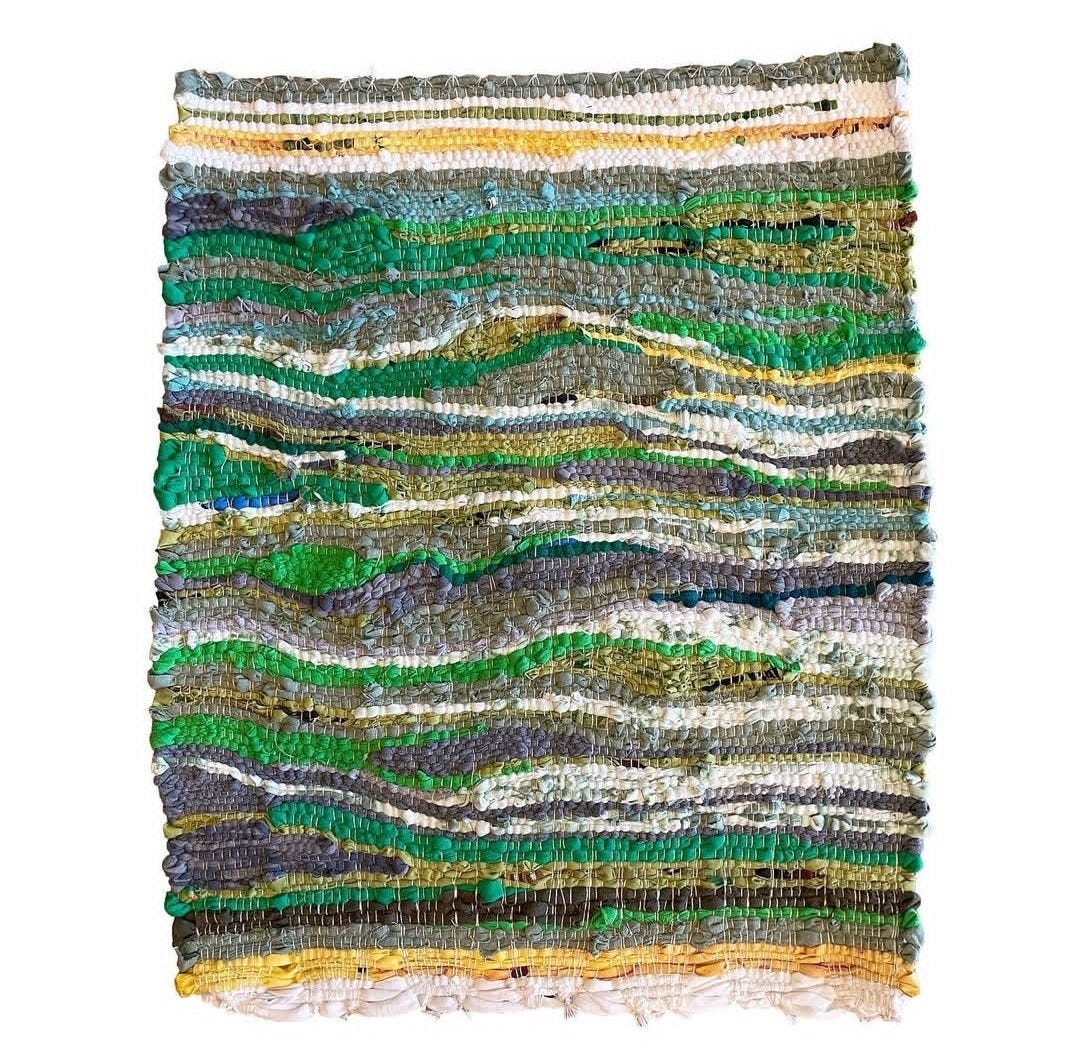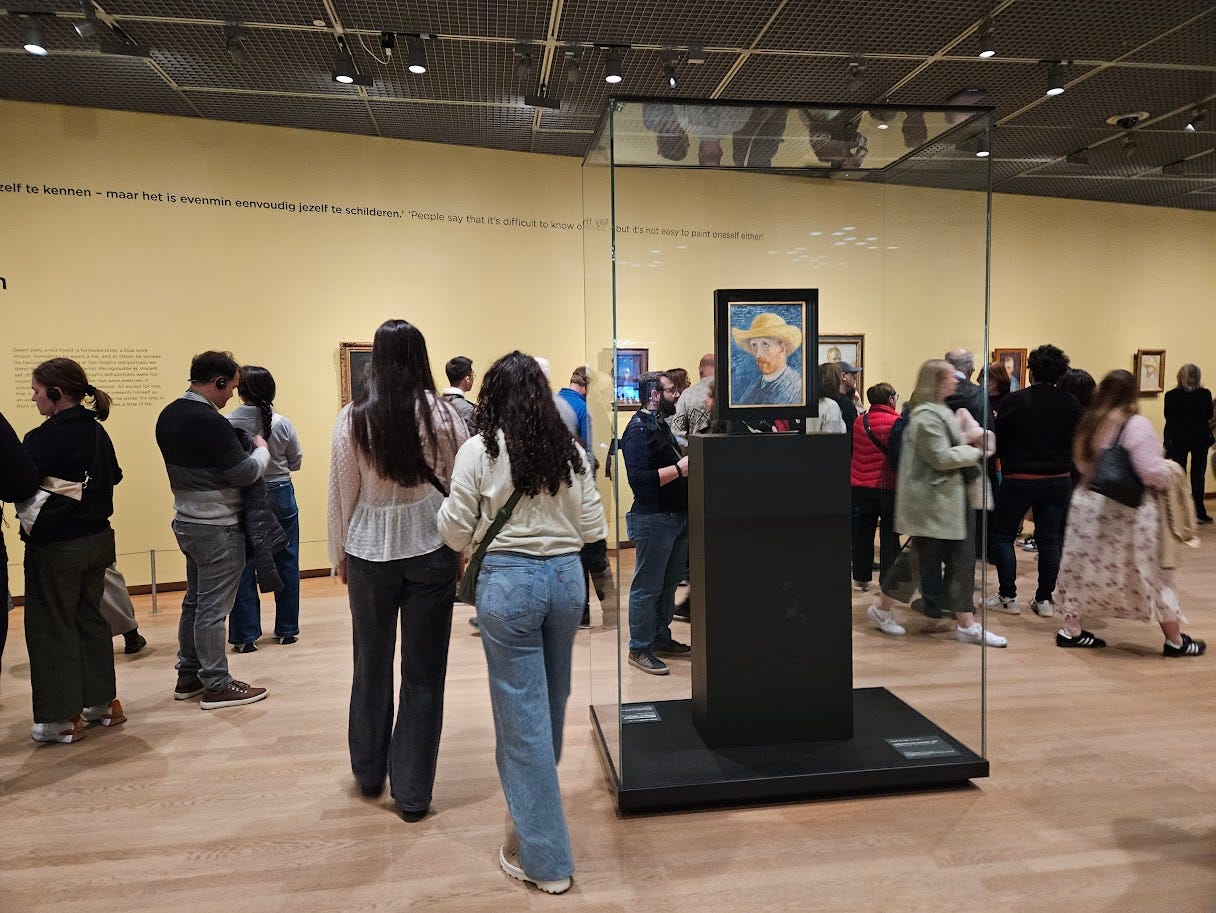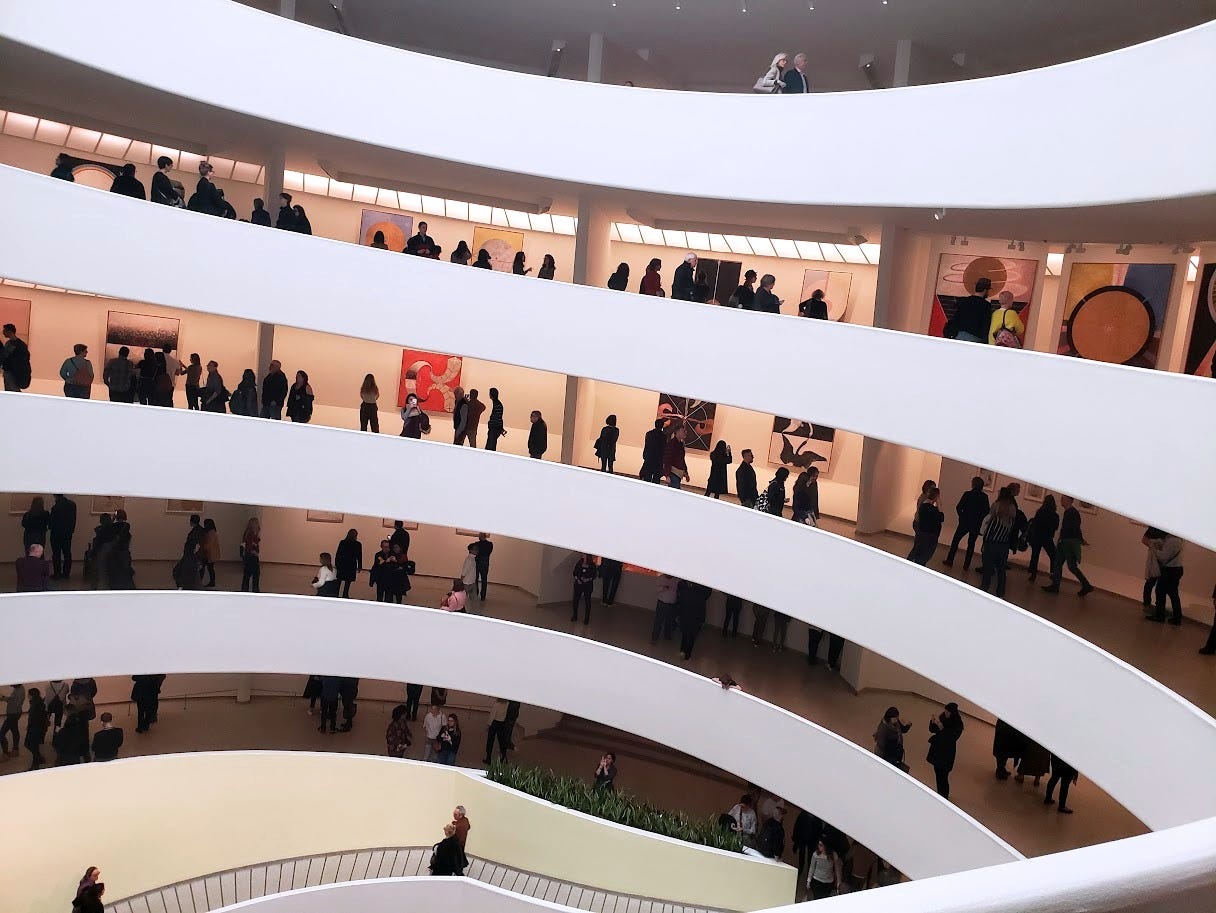If the financial motivations of the traditional art world have long been toxic, analogous to smoking cigarettes in that they’re destructive but potentially glamorous, then this generative art world feels like vaping: robotic, dystopian and probably more toxic in ways still unknown.
It’s not a new idea that the art world is classist, obsessed with money and status even when pretending to be otherwise, transcendental even while material-seeking. But generative art, by which I mean code-based art made either with AI or through other computer codes, raises more questions, like who is allowed to own art? To pursue it? How does coding make something more exclusive through the singular pursuit of tech purity? This generative art world, arguably, is not about opening access through (now-seemingly) infinite possibilities but about taking art away, making ownership even more convoluted and calculated in a philosophical sense, a juxtaposition to what it could be doing as it seemingly becomes more accessible and yet is less.
Of course the art world (separate from art itself) is exclusionary. There have always been principles of value, demand, ego, and nonsense. Invisible rules, shifting goalposts, status, loss, exclusion—that world, especially in New York, never dies. The balance between nonchalance and obsession. The ways people feel buoyed by ego and drowned by it. The visual art world is its own, where money and status and commercial success can all be very separate entities.
But what does it mean to exist as an artist, especially now?
The other day, a friend said he wanted to date an artist but a “not rich” one, specifying that someone without generational wealth would be ideal. That is a tall order.
There is, of course, the starving artist cliché, a reflection of the lack of financial stability for many artists—a true and grim reality that creates a foundation for the actuality of why so many artists now require a financially stable background that usually means coming from a wealthy family or marrying into one.
New York City does still provide some supports for artists. There are grants, contests, and collaborative spaces. For a rare few, there’s housing. Timothée Chalamet has emphasized the Michell-Lama program his family benefited from growing up.
It is hard to survive solely on a craft that the world may not understand or embrace until one’s death—if ever.
These are not new debates but as class disparities continue to grow and AI technology becomes ubiquitous, there are more and more questions about the future of art and its accessibility.
Horseshoe Theory in politics stipulates that the extreme left and the extreme right are actually more similar to each other than those in the middle, but I often see this theory in its relationship to class.
The rich and the poor may share similarities but for very different reasons. (For example, last year I wrote about how both low-income neighborhoods and affluent suburbs lack sidewalks but low-income areas have often requested them and lack them usually because of financial constraints and budget cuts, which can result in high traffic fatalities, especially for communities of color, while affluent areas have been on record fighting against sidewalks as a way to keep “outsiders” out of their neighborhoods.)
Horseshoe Theory, for me, also applies to generative art, at least from an aesthetic perspective. (I’m writing this not as a tech person but as an outsider looking at this world, which seems to be what most of us are, which only emphasizes my point about how narrow this world is.)
Generative art is seen as high-brow but at the same time, these mostly-geometric possibilities remind me, at times, of Wal-Mart rugs and doctor’s office art. Soulless, inoffensive. Occasionally eye-catching. But what lies in the shapes and patterns? Intricacies, occasionally, but also an attempt at orderliness and uniformity. Pattern. Cleanness.
The same things that would be scoffed at at a TJ Maxx—mass produced feeling of art that languishes—is being bought, collected, and treasured. But it’s still safe in its geometrical limitations to be displayed nonchalantly in a way that would allow it to be a LinkedIn banner.
What does appeal do to something? How is cachet marketed, assessed?
Unlike weaving—the intricacies striking, patterned but imperfect, the human-quality making them feel spontaneous—generative art feels polished, final.

The history of generative art can be linked to the Dada art movement. Then, in 1965, the Georg Nees and Frieder Nake, who were German mathematicians, exhibited what were known as some of the first graphics created by a digital computer in Stuttgart.
When will AI overtake traditional art and artists? Artists already struggle against the algorithms.
So much of New York’s essence is its access to the arts. My Hunter College graduate ID allowed me free entry to the Guggenheim, my favorite museum for its architecture and how its design allows the art to inhabit the space.
(Hilma Af Klint had envisioned her work being shown in a temple with a spiral staircase, and the Guggenheim exhibit in New York helped actualize her vision.)
My exposure to visual art growing up was mainly limited to museum trips with my school. At home, we had one painting, which now hangs in my brother’s home. It was a forest, something my mother won through a contest that she had entered in hopes of winning a mantel clock.
I remember when I saw pointillism for the first time in middle school and how its concept created a small obsession in me, an idea that repetition and completion within a conceptual structure could also be art, which was the first time I thought and understood that. I think of Walter Benjamin: “The uniqueness of a work of art is inseparable from its being embedded in the fabric of tradition.”
On Season 7 of Love is Blind, there was a pretentious art dealer, Leo, who seemed to fit an array of stereotypes about the art world. It was interesting how out-of-place his demeanor and money obsession was in the format of the show where external and superficial things were supposed to be irrelevant. His ego, concerns about status, and immaturity wasn’t becoming for TV. The pretense just felt juvenile there, though he seems to be doing well on social media now.
My neighborhood in Brooklyn has a cute, quaint, messy, and intriguing art store. My first love bought me a painting from there shortly after we moved in together and were just beginning our careers. In the grand scheme of things, the painting was relatively affordable but it felt so out of reach then. We’d go out to eat with his parents and then walk around and I’d stare in the window. It felt safe to long for it because I never thought we would have it. And then one day he came home with it. When I never thought we would break up, we would joke over who would get it. When we did break up, he gave it to me.
I know the appeal of ownership, collecting, that human urge to capture a feeling, make it tangible through an object that is supposed to represent permeance. In that moment, being gifted a painting, I felt utterly and completely loved and adored. When I think of art in that way, of what ownership can mean and how it can make someone feel, I soften. Perhaps—of course—we all want to feel love and value, be seen, understood, feel appreciation from our own appreciations. But there’s the personal component and the collective, structural component and its ramifications. What does it mean to overconsume and collect? Does generative art just mean a way to compete with insatiable consumption?
There is the part of me that wonders if I don’t like it simply because I don’t get it. It seems, perhaps because it actually is, like another language. I don’t code. I don’t work in tech.
But most of my resistance comes from the fact that generative art feels like a way to make art even less accessible.
It reminds me of how college—the idea and the reality—has evolved in a way to make it mean less, becoming both a requirement for entry while still not being enough to guarantee success. Where I was from, simply going to college was the goal. Besides Harvard, which I had heard of even as a child (though probably only from Legally Blonde), I didn’t know the power or the mystique behind any of the other Ivies. My high school determined paths for the future as being “college-bound” or “trades.” And so I went to college, everything totally contingent on one mentor’s advice when I was somewhat aimless, and attended a state school, only to learn, as I looked for a job outside of the service industry, that employers were looking for the “right” colleges.
Once again, I felt, the world was shifting goal posts and nothing was enough. (Of course the world is hard for everyone and I’m doing fine. But it would be nice if life didn’t have to be so hard at times, for me, for those whom I know and love.)
This widely-shared post, where the anger about not having a job resonated with so many, still contained subtle elitism around who should get what, even while lamenting the unfairness of who gets what. I remember reading it and sharing it with a friend who I thought could have sympathy with it, while still feeling the sting of what felt like judgement towards Domino’s Pizza workers, since I had once been one.
Instead of a broad coalition—all frustrated workers coming together—there is still separation. There’s a fracturing among the working class, especially among Democrats. Sometimes it seems like Bernie Sanders, who is not getting any younger, is the only politician who wanted to truly unite the different facets and factions of the working class. But so many others seem intent on creating divisions.
Generative art, it can seem, is trying to be the Ivies in a world where art starts to migrate to too many of us that class-created, self-induced hierarchies tried to inch out. It feels like a way to say this art is for those who are not-like-you. This art is inaccessible. This art is ownable in new, disturbing ways.
The Bored Ape NFT Justin Bieber bought in 2022 for $1.3 million was many people’s first foray into that world. While its current value isn’t so clearly definable, it’s now estimated to be worth less than $60,000 now.
What does celebrity intrigue bring? Obviously there are some interesting pieces. There are some things, too, that make me pause, that don’t simply look like screensavers. Of course, there can be intrinsic value and purpose. The possibilities of generative art offer prospects that may seem exciting or intriguing. But it desensitizes and sterilizes the things that make art so palpable.
I worry my judgements are outdated. I worry that I’m wrong because I haven’t actually worked to produce a work of generative art. I worry that I am being uncurious simply because I feel that it is not for me—that the concept is designed to keep me out—and my only act of defiance is staying within the lines that have already been drawn, like an ant in my own reality.
As they say, the winners write their own history books. So perhaps, most hauntingly, I worry that I’m wrong not because my perspective is wrong but because the future—one intrinsically linked to technology, AI, and increasing class divisions—will make it wrong.
My most recent pieces in Business Insider are here.
You can check out more of my work here.








Excellent points!